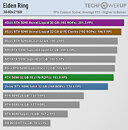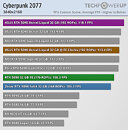
Surprise Reversal: GeForce RTX 5090 Found with Too Many ROPs, Matches RTX Pro 6000, +8% Performance
NVIDIA's stellar quality control with the $2,000 GeForce RTX 5090 saw quite a few customers end up with cards that had fewer ROPs than they should—168 as opposed to its original spec of 176. The 8 fewer ROPs results in a roughly 5% drop in performance. When you're ponying up over two grand, this is the last thing you want. But what if we told you there are cards out there were more ROPs than they should have? We have with us an ASUS ROG Astral GeForce RTX 5090 LC graphics card that we detected 192 ROPs on. That's right, the card has all the 192 ROPs active that are present in the "GB202" silicon, or two ROP partitions (16 ROPs) more than it should have. We received our ROG Astral RTX 5090 LC sample just a few weeks ago, and haven't had time to thoroughly test it yet, because we're in the middle of a full retest with new games and new drivers.
The ASUS ROG Astral LC is a factory overclocked card, with ASUS giving the card a generous OC to benefit from the liquid cooling solution (2580 MHz boost vs. 2407 MHz reference or +7.1%). To account for that, we tried our best to clock the card back down to reference specs, which is presented as the orange bar. This still isn't the same card as the RTX 5090 Founders Edition, because the superior cooling solution and power limits mean that the GPU enjoys better boost frequency residency, but this is as close as we can get to simulating reference spec. We ran the card through a battery of game tests, which show an average of 8% performance gains over the RTX 5090 Founders Edition.
The ASUS ROG Astral LC is a factory overclocked card, with ASUS giving the card a generous OC to benefit from the liquid cooling solution (2580 MHz boost vs. 2407 MHz reference or +7.1%). To account for that, we tried our best to clock the card back down to reference specs, which is presented as the orange bar. This still isn't the same card as the RTX 5090 Founders Edition, because the superior cooling solution and power limits mean that the GPU enjoys better boost frequency residency, but this is as close as we can get to simulating reference spec. We ran the card through a battery of game tests, which show an average of 8% performance gains over the RTX 5090 Founders Edition.
























































